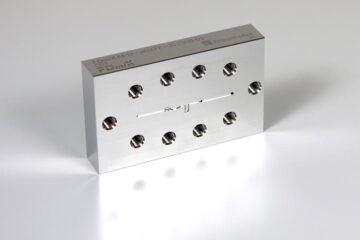‘Over The Moon’ At Saturn

UK scientists involved in the Cassini space mission were ‘over the Moon’ after the spacecraft’s 100,000 km per hour white knuckle ride courtesy of Saturn’s gravity which successfully completed the critical manoeuvre to place Cassini in orbit around the ringed planet. ‘I’ve waited 15 years for this moment,’ said Dr Andrew Coates of the UK’s Mullard Space Science Laboratory and Co-Investigator on the Cassini spacecraft’s Plasma Electron Spectrometer,’ and now our 4-year tour of discovery can really begin’.
Speaking from NASA’s Jet Propulsion Laboratory in Pasadena California, Dr. Michele Dougherty of Imperial College London and Principal Investigator for the magnetometer instrument on Cassini, said,’ the spacecraft performed superbly tonight and critical data was taken during the 95 minute engine burn period. Analysis of this will begin in a few hours as soon as the data is transmitted back to Earth.’
Prof. Carl Murray from Queen Mary, University of London, involved on the Cassini cameras, was equally ecstatic,’ this is a remarkable achievement and a wonderful example of a successful, international collaboration. The arrival of the Cassini-Huygens spacecraft at Saturn heralds a new age in our understanding of this majestic planet and its retinue of moons and rings. I have no doubt that the wealth of data to be returned will also provide unique insights into the origin and evolution of planetary systems. The next four years will be tremendously exciting for everybody.”
A jubilant and relieved Prof. John Zarnecki of the UK’s Open University added, ’For me its been 7 years in the planning, 7 years of travel and 95 minutes of purgatory – but now we’ve made it and the next stop is Titan’. For Prof. Zarnecki, Principal and Co-Investigator on two key instruments onboard the Huygens probe currently piggy backing the Cassini mothership, there are still more nail-biting moments ahead. Huygens will separate from Cassini on the 25 December this year and parachute down through the nitrogen-rich atmosphere of Titan, Saturn’s largest moon, to land on the surface on the 14 January 2005.
The Saturn Orbit Insertion was the last and most critical manoeuvre for the Cassini orbiter and the spacecraft, which is in perfect shape, will now commence science operations during its 76 orbits of the ringed planet.
Over the next few months the European Space Agency’s scientists, including Prof. John Zarnecki and colleagues, will prepare for the release of the Huygens probe.
Media Contact
More Information:
http://www.pparc.ac.ukAll latest news from the category: Physics and Astronomy
This area deals with the fundamental laws and building blocks of nature and how they interact, the properties and the behavior of matter, and research into space and time and their structures.
innovations-report provides in-depth reports and articles on subjects such as astrophysics, laser technologies, nuclear, quantum, particle and solid-state physics, nanotechnologies, planetary research and findings (Mars, Venus) and developments related to the Hubble Telescope.
Newest articles

For microscopic organisms, ocean currents act as ‘expressway’ to deeper depths
New research shows how tiny plant-like organisms hitch a ride on ocean currents to reach darker and deeper depths, where they impact carbon cycling and microbial dynamics in the subtropical…

FDmiX: Fast, robust series production of nanoparticles
Nucleic acid-based medications such as mRNA vaccines are opening up new therapeutic approaches. These active ingredients must be enclosed inside nanoparticles to ensure that they get to where they are…

Sensor measures oxygen content of breath
Oxygen saturation in the blood that is either too low or too high can cause physical harm or even death. This is why patients’ oxygen concentraions are monitored continuously in…





















